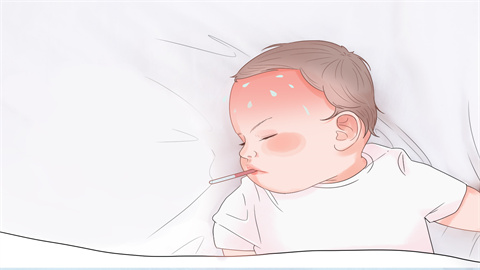What should I do if a two-year-old child has a fever of 39.5°C?
Generally speaking, fever refers to elevated body temperature. A temperature of 39.5°C in a two-year-old child may be related to high environmental temperature, strenuous physical activity, upper respiratory tract infection, acute gastroenteritis, pneumonia, or other causes. It is recommended to seek timely medical attention and follow a doctor's guidance regarding general treatment and medication. Detailed explanations are as follows:

1. High Environmental Temperature
A child's thermoregulatory center is not yet fully developed, making it susceptible to external environmental temperatures. When the surrounding temperature is too high, the child's body cannot effectively dissipate heat, resulting in elevated body temperature. It is recommended to maintain a suitable indoor temperature and avoid prolonged exposure of the child to high-temperature environments.
2. Strenuous Physical Activity
Children are naturally active and produce significant heat during vigorous exercise. If this heat cannot be dissipated promptly, it may cause an increase in body temperature. It is recommended to appropriately schedule the child's exercise duration and intensity, avoiding strenuous activity during hot weather or in enclosed environments.
3. Upper Respiratory Tract Infection
Upper respiratory tract infections are commonly caused by viral or bacterial infections. These infections intensify inflammatory responses in the child's body, releasing inflammatory mediators that elevate body temperature. Symptoms typically include runny nose, coughing, and sneezing. Follow medical advice to use medications such as compound paracetamol amine tablets, isatidis root granules, and oseltamivir phosphate capsules.
4. Acute Gastroenteritis
Acute gastroenteritis is usually caused by infection with viruses, bacteria, or parasites. Gastrointestinal inflammation caused by acute gastroenteritis leads to elevated body temperature. It is commonly accompanied by symptoms such as nausea, vomiting, and changes in stool consistency. Follow medical advice to use medications such as enteritis ling tablets, compound berberine tablets, and amoxicillin-clavulanate potassium granules.
5. Pneumonia
Pneumonia is typically caused by infection with pathogens such as bacteria, viruses, or mycoplasma. Lung inflammation caused by pneumonia releases inflammatory mediators, leading to elevated body temperature. Symptoms may also include coughing, sputum production, and rapid breathing. Under a doctor's recommendation, medications such as cefuroxime axetil tablets, ambroxol hydrochloride oral solution, and doxycycline hydrochloride tablets may be used for treatment.
It is also important to moderately supplement minerals and vitamins in daily life while avoiding greasy, spicy, or irritating foods to promote recovery.




